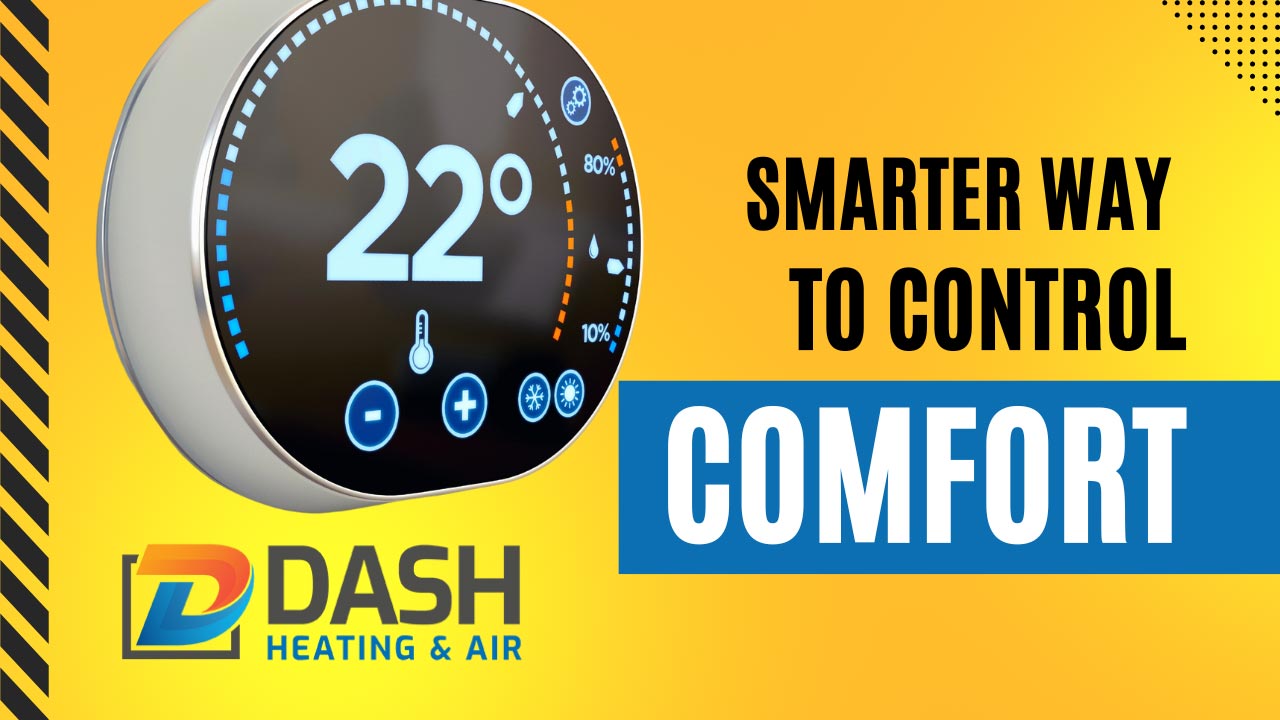The Top Benefits of Smart Thermostats: A Smarter Way to Control Comfort

The Top Benefits of Smart Thermostats: A Smarter Way to Control Comfort
In the age of advancing technology, our homes are becoming smarter and more interconnected. One of the remarkable innovations transforming the way we manage our living spaces is the introduction of smart thermostats. These intelligent devices have revolutionized temperature control, offering a range of benefits that extend beyond mere convenience. In this comprehensive exploration, we’ll delve into the top advantages of smart thermostats, highlighting how they are enhancing comfort, efficiency, and sustainability in our homes.
Understanding Smart Thermostats
Smart thermostats are a leap forward from traditional thermostats, allowing homeowners to remotely control and automate their heating, ventilation, and air conditioning (HVAC) systems. These devices connect to your home’s Wi-Fi network, enabling you to manage them through smartphone apps, voice commands, or even web browsers. The integration of sensors, learning algorithms, and connectivity features elevates smart thermostats to the forefront of home automation technology.
The Benefits of Smart Thermostats
The adoption of smart thermostats offers a range of advantages that go beyond the convenience of remote control. Let’s explore the top benefits that make smart thermostats a worthy investment:
1. Energy Savings
One of the primary reasons homeowners embrace smart thermostats is their ability to deliver substantial energy savings. These devices learn your schedule, preferences, and even your home’s thermal characteristics. Using this data, they create customized heating and cooling schedules that maximize energy efficiency. Smart thermostats can automatically adjust the temperature when you’re away, reducing energy consumption and lowering utility bills.
2. Learning Capabilities
Smart thermostats are equipped with learning algorithms that adapt to your habits over time. They take into account factors such as when you wake up, when you leave for work, and when you return home. By learning your routine, these thermostats optimize temperature settings to ensure comfort when you need it while conserving energy during periods of inactivity.
3. Remote Control
Gone are the days of returning to a cold or overly warm home. With smart thermostats, you can adjust the temperature remotely using your smartphone or tablet. Whether you’re on vacation, at work, or simply lounging on the couch, you have complete control over your HVAC system’s settings at your fingertips.
4. Geofencing
Smart thermostats leverage geofencing technology to detect your smartphone’s location. When you leave a predefined area around your home, the thermostat can automatically switch to an energy-saving mode. As you approach your home, it can adjust the temperature to your preferred setting, ensuring a comfortable welcome.
5. Integration with Home Automation
Smart thermostats seamlessly integrate with other smart home devices, creating a cohesive and interconnected ecosystem. They can communicate with smart lighting, locks, and security systems to enhance your home’s overall efficiency, convenience, and security.
6. Data Insights
Smart thermostats provide valuable insights into your energy usage patterns. Many models offer detailed reports and analytics, allowing you to track your consumption and make informed decisions about energy conservation.
7. Zone Heating and Cooling
Some smart thermostats support zoning capabilities, allowing you to divide your home into different temperature zones. This is particularly useful if you have rooms with varying heating and cooling needs. Zoning ensures that you’re not wasting energy by conditioning unoccupied or rarely used spaces.
8. Voice Control
With compatibility with voice-activated virtual assistants like Amazon Alexa, Google Assistant, and Apple Siri, smart thermostats offer the convenience of hands-free control. You can adjust the temperature, create schedules, or even ask for energy-saving tips using voice commands.
9. Adaptive Recovery
Smart thermostats employ adaptive recovery algorithms to ensure your home reaches the desired temperature precisely when you need it. By calculating the optimal time to start heating or cooling, these thermostats avoid unnecessary energy consumption.
10. Software Updates
Manufacturers regularly release software updates for smart thermostats, enhancing their functionality, security, and performance. This means your device can continue to improve and stay up-to-date with the latest advancements.
Choosing the Right Smart Thermostat
As the market for smart thermostats expands, it’s essential to select the right one for your needs. Consider the following factors when making your decision:
1. Compatibility
Ensure that the smart thermostat is compatible with your HVAC system. While most models are designed to work with a wide range of systems, it’s crucial to verify compatibility before purchasing.
2. Features
Evaluate the features offered by different smart thermostat models. Do you need learning capabilities, geofencing, or voice control? Choose a thermostat that aligns with your preferences and lifestyle.
3. User Interface
Consider the user interface and ease of use. A user-friendly app and intuitive controls will enhance your experience and ensure you make the most of your smart thermostat’s features.
4. Integration
If you already have other smart home devices, opt for a smart thermostat that seamlessly integrates with your existing ecosystem. This will allow you to control multiple devices from a single platform.
5. Budget
Smart thermostats come in a range of price points. While investing in a feature-rich model can provide long-term benefits, it’s important to choose a thermostat that fits within your budget.
6. Professional Installation
While some smart thermostats offer DIY installation, others may require professional assistance. If you’re unsure about the installation process, it’s advisable to seek the help of an HVAC professional.
The Future of Home Comfort
The proliferation of smart thermostats signals a transformative shift in the way we interact with our living spaces. As technology continues to evolve, these devices will likely become even more sophisticated, efficient, and integrated into our daily lives. With the potential to save energy, reduce costs, and enhance comfort, smart thermostats are a gateway to a smarter, more sustainable future.
Conclusion
Smart thermostats are more than just gadgets; they are game-changers in the realm of home comfort and energy efficiency. With their learning capabilities, remote control features, and integration with other smart home devices, they provide a level of customization and convenience that was once unimaginable. As we strive for more sustainable and energy-efficient lifestyles, smart thermostats offer a tangible solution that empowers homeowners to make a positive impact on the environment while enjoying unparalleled comfort and control. Investing in a smart thermostat is not just a choice; it’s a step towards a smarter, more connected, and more sustainable future.
